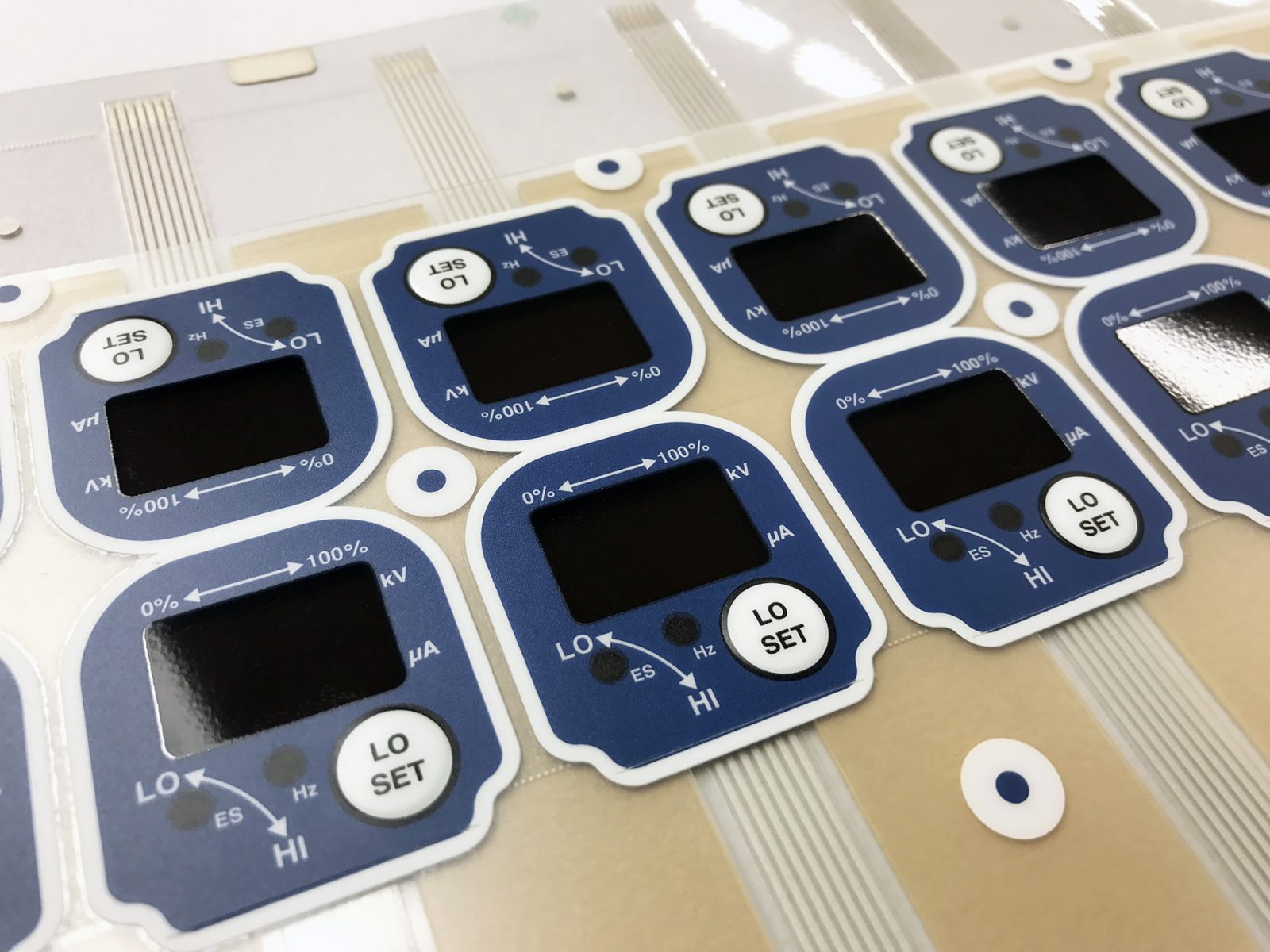The Role of Membrane Switches in Enhancing Device Functionality
Wiki Article
Comprehending Membrane Switches: The Trick to Reliable and long lasting Controls

What Are Membrane Layer Buttons?
Membrane switches are an advanced remedy in the world of interface innovation, integrating performance and layout seamlessly. These devices work as an interface between users and electronic systems, integrating a number of elements into a small style. Normally created from adaptable, slim layers of products, membrane layer buttons are made to react to touch, making it possible for customers to interact with equipment and digital tools properly.The key elements of a membrane layer button consist of a printed circuit layer, graphic overlay, and a spacer layer that avoids unintentional activation. The graphic overlay can be customized to reflect brand identity or user preferences, boosting looks while making sure functionality. Membrane layer switches are typically utilized in various applications, including clinical tools, customer electronics, and industrial equipment, owing to their sturdiness and resistance to ecological aspects such as wetness and dust.
One of the key benefits of membrane layer switches is their capacity to hold up against damage, making them optimal for high-traffic environments. Additionally, they are light-weight and need minimal room, permitting ingenious designs in item growth. On the whole, membrane changes represent a efficient and functional option for modern-day electronic interfaces, marrying innovation with user-centric design concepts.
How Membrane Layer Switches Job
The operation of membrane layer switches over hinges on an easy yet reliable mechanism that converts customer input into electronic signals. When an individual presses the button, the leading layer deforms, enabling a conductive aspect in the circuit layer to make call with a corresponding conductive pad on the underside of the graphic overlay.The style of membrane layer buttons can differ, but they typically include domes or responsive components to provide comments to the individual, improving the general experience - membrane switch. The products made use of in membrane layer buttons, such as polyester or polycarbonate, add to their resilience and resistance to environmental elements, including wetness and dust. Moreover, the published circuits are normally enveloped, which secures them from damage with time.
Advantages of Membrane Layer Buttons

Additionally, membrane switches are understood for their longevity. Created from durable products, they are immune to dirt, moisture, and physical wear, which significantly extends their life expectancy compared to conventional mechanical switches. This toughness makes them specifically ideal for high-traffic settings and applications requiring durability.
One more considerable benefit is the simplicity of cleaning and maintenance. The smooth surface of membrane layer switches over decreases dirt build-up and is usually unsusceptible spills, making them excellent for setups that need regular sanitization.
Furthermore, membrane buttons supply a structured profile, resulting in a thinner design that can be incorporated right into different devices without including mass. This function not only enhances the visual charm however also contributes to an extra ergonomic product design.
Applications of Membrane Layer Buttons
Versatile and user-friendly, membrane buttons discover applications across a variety of industries, consisting of medical devices, customer electronics, and commercial devices. In the clinical field, these buttons are important to devices such as analysis tools, client tracking systems, and mixture pumps, where dependability and simplicity of cleansing are crucial. Their ability to maintain and hold up against severe environments performance makes them perfect for such applications.
In customer electronics, membrane layer buttons are utilized in items like microwaves, cleaning devices, and remotes - membrane switch. Their sleek style permits for intuitive interface, boosting the total user experience while supplying durability and resistance to use and tear
Commercial equipment likewise takes advantage of membrane layer buttons, especially in control panels for equipment and automation systems. These switches offer security versus dirt and dampness, ensuring constant performance in difficult settings. Their adjustable functions allow makers to customize them to specific operational needs, improving efficiency and functionality.
Choosing the Right Membrane Switch Over
When selecting a membrane layer button, it is essential to consider various his comment is here variables that affect efficiency and suitability for particular applications. The primary considerations consist of ecological conditions, tactile feedback, durability, and layout requirements.
First, analyze the operating setting; switches exposed to moisture, chemicals, or severe temperatures require details products to guarantee longevity and capability. Next off, assess the need for responsive comments. Depending on customer interaction, some applications may gain from a responsive reaction to confirm activation, while others might prefer a non-tactile layout for aesthetic reasons.
Toughness is an additional crucial factor; membrane layer switches must be made to endure constant usage, impacts, and abrasion. Make certain the chosen button can withstand the anticipated lifecycle, especially in high-usage scenarios.

Final Thought
Finally, membrane layer changes work as vital components in the design of sturdy and reputable control systems throughout various sectors. Their small design, integrated with robust building and construction and customizable attributes, improves customer interaction while ensuring durability sought after atmospheres. The versatility of membrane layer changes permits for tailored remedies that satisfy details operational demands, reinforcing their relevance in modern technology. As sectors continue to advance, the relevance of integrating efficient membrane layer switch options can not be overemphasized.
Membrane layer changes stand for a critical aspect of modern interface style, blending performance with durability in numerous applications.Membrane layer buttons are an innovative remedy in the world of customer interface technology, combining functionality and design seamlessly. Usually built from versatile, thin layers of materials, membrane switches are designed to react to touch, making it possible for individuals to communicate with equipment and electronic This Site devices successfully.
The layout of membrane layer buttons can differ, however they usually include domes or responsive aspects to offer feedback to the user, boosting the total experience.In final thought, membrane switches offer as crucial parts in the style of resilient and reputable control systems throughout numerous markets.
Report this wiki page